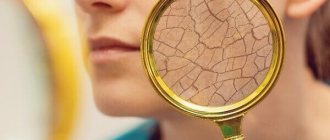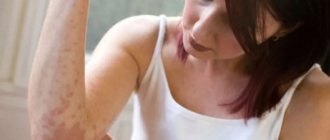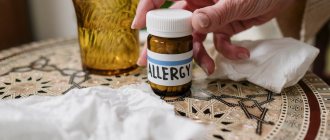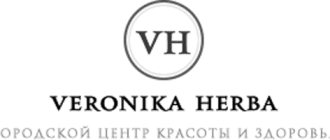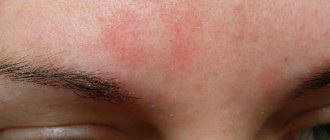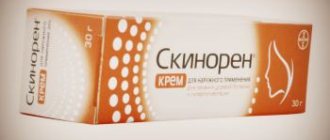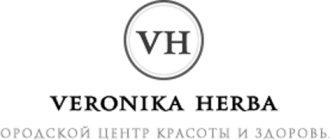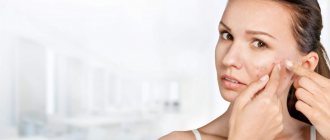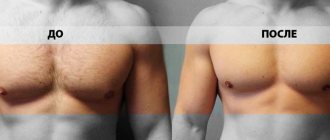Treatment program Doctors Prices Reviews For more than two thousand years, humanity has been trying to unravel all the mysteries of this severe dermatosis, but still much remains unknown. According to statistics, this disease affects 4 to 7% of the population; women and men are equally susceptible to it. The first signs of psoriasis usually appear during puberty and accompany a person throughout the rest of his life, sometimes subsiding and disappearing completely, sometimes intensifying.
Is it possible to cure psoriasis?
? Modern medicine has achieved a lot in the treatment of this chronic dermatosis and is able to provide the patient with a decent level of quality of life.
- Simple (vulgar, plaque)
- How dangerous is psoriasis and does it need to be treated?
- Treatment methods for psoriasis Nutrition for psoriasis Pegano diet
- External treatment of psoriasis
- Home treatment for psoriasis
Causes of psoriasis
Psoriasis is a chronic skin inflammatory process, which modern medicine classifies as autoimmune (associated with allergies to one’s own tissues). There are many causes of psoriasis and factors predisposing to the development of this dermatosis, and therefore a number of theories of its origin have been put forward.
Autoimmune
This is the main theory, since it is well established that the immune system actively reacts to certain types of skin exposure.
The skin of people suffering from psoriasis is very sensitive to mechanical, physical, and chemical influences. Not only epithelial cells, but also the entire immune system react to such influences. Cellular immunity is disrupted: the relationship between individual subtypes of lymphocytes responsible for the formation of a normal immune response. Thus, with psoriasis, the number of helper T-lymphocytes - assistants that regulate immunity - increases, while at the same time the number of suppressor T-lymphocytes, which suppress an overly strong immune reaction, decreases. Lymphocytes and some other cells produce cytokines - active substances that stimulate the immune response. Humoral immunity also suffers, an imbalance of antibodies (immunoglobulins) develops in the blood serum, and antibodies to the patient’s body tissues appear.
Inflammation begins against the background of activation of T-lymphocytes, but why they are activated has not been established. Research is also underway on how to suppress the autoimmune reaction without harming the patient.
Exchange
Imbalance in metabolism has a significant impact on the skin and immunity. Patients with psoriasis experience an acceleration of metabolism, the appearance of a large number of toxic free radicals and other toxins that support the inflammatory response. Metabolism is disrupted:
- protein
– the CDSN predisposition gene stimulates the synthesis of the protein corneodesmosin, which sensitizes (allergenic) the body; The content of albumin proteins in the blood decreases and the content of globulins increases; this condition is called dysproteinemia and further enhances sensitization; - fatty
– the content of lipids and cholesterol in the blood increases; eating predominantly plant foods and a general reduction in daily caloric intake can reduce the activity of psoriatic inflammation; - carbohydrate
– almost always violated; - exchange of vitamins and minerals
– the content of vitamin C in the skin increases, the content of vitamins C, A, B6, B12, iron, copper and zinc in the blood decreases.
Infectious
This theory was relevant at the beginning and in the middle of the last century. The causative agents of psoriasis were considered to be certain bacteria (streptococci), fungi and viruses. These theories were not confirmed. But dermatologists note that any acute infectious process or the presence of a permanent source of infection can provoke relapses. The viral theory occupies a special place. Recent studies have revealed the influence of retroviruses (RNA-containing viruses - HIV, etc.) on the genetic apparatus with the formation of genes for psoriatic predisposition.
Genetic
Predisposition to autoimmune reactions is inherited. If someone close to you suffers from psoriasis, then the likelihood of developing this disease increases many times over. There are predisposition genes for psoriasis (local complexes PSORS1 - PSORS9, PSORS1 is especially active, it contains the genes HLA-C, HLA-Cw6, CCHCR1 and CDSN, which are responsible for the development of the disease). Genes influence metabolism, immunity and the development of autoimmune processes. But the presence of such genes does not at all guarantee the development of the disease. The influence of provoking factors is of great importance.
Neurogenic
Prolonged stress, high neuropsychic stress, disorders of the autonomic nervous system (innervating the walls of blood vessels and internal organs) can cause the development of psoriasis, causing an imbalance in the endocrine system, disruption of metabolic and immunological processes.
Endocrine
Endocrine disorders in psoriasis are common and mainly play the role of a provoking factor. A clear connection between them has not been proven. Dermatologists note that patients often exhibit dysfunction of the thyroid gland, adrenal glands, and pituitary gland. There are disturbances of the menstrual cycle in women and sexual function in men.
Symptoms of psoriasis
The main symptoms of psoriasis are skin rashes. But there are other signs as well. The very first manifestations usually appear in adolescence or childhood against the background of hormonal disorders, vegetative-vascular dystonia and prolonged stress.
The disease begins with a feeling of constant fatigue and mood disturbances. Characteristic are small, pinkish formations (papules) rising above the surface, powdered with whitish peeling on top. They are surrounded by a brighter, raised rim.
Elements of the rash grow and unite into large plaques of bizarre shapes. The base of the papule is an inflammatory infiltrate. Based on the nature of the rash, psoriasis is divided into:
- point
– elements no more than 1 mm in diameter; - teardrop-shaped
– papules-droplets up to 2 mm in size; - coin-shaped
– round papules-coins up to 5 mm in size.
Ulcerative rash
Guttate rash
Coin rash
Characteristic features of the rash:
- stearic stain
- if scraped, the surface of the papule; - terminal film
- having thoroughly cleaned the surface of the papule from scales, we will see a transparent film; - bloody dew (Auspitz phenomenon)
- after scraping the film and violating its integrity, we will see small bloody droplets protruding on the surface.
Erythrodermic psoriasis
Erythrodermic psoriasis (psoriatic erythroderma) is one of the severe forms of the disease, leading to disability and death. It often develops from vulgar psoriasis, especially with abrupt discontinuation of therapy and an unstable course of the disease. This form also appears as a result of alcohol abuse, severe stress, and a severe cold.
Manifestations
- inflammation spreads to 90% of the skin or more;
- the skin becomes bright red, hot to the touch, swollen;
- large and small dry white scales that are easily separated;
- itching, burning, tight skin, painful sensations;
- weakness, loss of appetite, increased sweating;
- elevated body temperature - 38-39°;
- lymph nodes enlarge;
- hair and nails fall out.
Common sites of injury
- the entire surface of the body.
Photo
Erythrodermic psoriasis on the body
Erythrodermic psoriasis
Stages of psoriasis
There are three stages of the disease:
- progressive
- the first elements of the rash appear, their number increases, and more and more new areas are captured; rashes also appear when scratching itchy skin or exposing it to some external irritating factors (Koebner phenomenon); in the initial stage of psoriasis, papules begin to merge into large plaques; - stationary
- there are no new elements, and those that appeared earlier do not regress; - regressing
- the rash turns pale and its base becomes less dense; the rash gradually regresses, the process often begins from the central part, so the plaques may have the appearance of rings; if plaques in psoriasis resolve from the periphery to the center, then they simply gradually decrease in size and a white ring forms around them - Voronov’s pseudoatrophic rim; where the rash was, white areas devoid of pigment remain - psoriatic leukoderma.
Occasionally, papules at all three stages of development are present on the skin at the same time. There are also summer and winter forms with a predominance of exacerbations in summer or winter.
Is psoriasis contagious?
Numerous studies have confirmed that this is not a contagious disease. If infectious pathogens take part in its development, then only through a general effect on metabolism, immunity and the genetic apparatus.
Patients often ask:
- How is psoriasis transmitted?
Psoriasis is not transmitted from person to person. - Is psoriasis inherited?
The answer is again negative, but there is a hereditary predisposition in the form of metabolic characteristics and the functioning of the immune system, which is passed on to close relatives.
Types of psoriasis
The nature of the rashes, their location, damage to other organs and systems in this chronic dermatosis can be different. Based on these symptoms, several types of the disease are distinguished.
Simple (vulgar, plaque)
The most common. Its symptoms are papules of a characteristic bright pink color, covered with white scales. Plaque psoriasis is divided into the following forms:
- mild
– if the lesion covers no more than 3% of the skin; in the progressive phase, the papules increase, but then quickly undergo reverse development; - moderate severity
- the rash occupies from 3 to 10%; papules are large, merge into plaques; - severe
– the lesion affects more than 10%; The rashes are numerous, merging, forming a wide variety of shapes.
Mild form of psoriasis
Moderate psoriasis
Severe form of psoriasis
Vulgar psoriasis occurs in the form of relapses followed by remissions, but there is also a continuous course.
Elbow psoriasis
This is one of the manifestations of a mild form of plaque inflammation. A distinctive feature of psoriasis on the elbows is the constant presence of one or more “duty” plaques on the extensor side of the elbow joints. If these elements are injured, an exacerbation begins.
Elbow psoriasis
Guttate psoriasis
In the development of guttate psoriasis, bacterial (most often streptococcal) and viral infections are of great importance. Occurs in childhood. Inflammation begins after an infection. Streptococci secrete toxins (antigens - substances foreign to the human body) that bind to tissue proteins. Antibodies are produced to them and autoimmune inflammation develops.
The beginning is acute. Small red tear papules with a flaky surface appear on the skin of the extremities (less commonly the body and face). When injured, small erosions and ulcers form in the area of the rash, increasing the risk of infection.
Onset of development of guttate psoriasis in childhood
Psoriasis quickly takes a subacute and chronic course. Relapses are replaced by remissions, spontaneous recovery or transition to the adult form of the disease is possible.
Palmoplantar psoriasis
It develops in those who do physical labor, is accompanied by severe itching and almost always causes complications on the nails. There are subspecies:
- plaque-fan-shaped
- with large elements on the palmar and plantar surfaces, covered with white scales merging into fan-shaped plaques; This type of psoriasis is more common on the hands; - circular
- ring-shaped flaky elements on the palmar and plantar surfaces; - callous
- characterized by the proliferation of rough epithelium with the formation of calluses;
A separate subtype is pustular psoriasis on the palms and soles of Barber. The areas under the thumbs of the extremities become covered with blisters and pustules (with purulent contents), and severe itching appears. The ulcers merge, then dry out, forming crusts. In other places on the body, characteristic psoriatic elements develop. The disease often spreads to the nails.
Psoriasis on the legs is maintained and aggravated by varicose veins, in which case the rash will be mainly in the area of the legs.
Nail psoriasis
Nail damage can be either independent or a complication. Characteristic symptoms:
- small dimples of varying depths appear on the nail plate; similar nail lesions occur with other dermatitis, but with psoriatic lesions they are deeper and slightly painful when pressed;
- spontaneous slow painless separation of the nail (onycholysis);
- subungual hemorrhages on the toenails, especially if the patient wears tight shoes;
- trachyonychia - clouding and irregularities on the nail plate; a depression forms in the middle of the nail and the nail becomes spoon-like (koilonychia).
Acute form of complication of the disease on the nails
Sometimes the periungual fold is affected, with inflammation spreading to other tissues (psoriatic paronychia).
Psoriasis of the scalp
Here the disease occurs independently or as part of a general pathological process. Characterized by weeping and the formation of crusts on part or the entire surface of the head. Hair growth is not affected: psoriasis on the scalp does not impair the function of the hair roots. But wetting creates a threat of infection with subsequent damage to the hair follicles.
Skin lesions on the scalp with psoriasis
It proceeds in waves, then subsiding with the disappearance of the crusts, then exacerbating again and is accompanied by severe itching, often leading patients to neurosis.
Seborrheic psoriasis
Seborrhea is a condition caused by a malfunction of the skin glands that produce sebum. Viscous sebum is produced, which irritates the skin and contributes to the development of inflammation - dermatitis.
Seborrheic psoriasis quickly spreads to the entire head, covering it in the form of a cap and accompanied by severe itching. In the areas behind the ears, weeping sometimes develops and infection occurs. Covered with dandruff and continuous crusts, the head sometimes looks like a psoriatic crown.
Psoriasis on the face
Typically, psoriasis on the face is localized in the area of the nasolabial triangle, eyelids, above the eyebrows, and in the areas behind the ears. The merged elements of the rash form large areas of redness and swelling. If there is a malfunction of the sebaceous glands, the process is often accompanied by weeping, the formation of crusts, and an increased risk of infection.
The first symptoms of psoriasis on the face
Psoriasis on the genitals
This is not an isolated process. Along with damage to the genital organs, there are characteristic psoriatic rashes throughout the body, so identifying the disease is not difficult.
Psoriasis on the penis in men and the labia majora in women, as well as on the adjacent skin areas, manifests itself in the form of oval, pink, scaly papules slightly raised above the skin. There is practically no itching. Sometimes the process spreads to the mucous membranes and takes the form of vulvovaginitis in women and balanoposthitis in men.
Atypical psoriatic rashes can be observed in obese people in the folds located next to the genitals (inguinal, intergluteal). Here, areas of intense red color with a mirror-like surface are formed without signs of peeling due to constant wetting.
Causes of psoriasis on the head
This is a chronic non-contagious dermatological process that develops in individuals with a hereditary predisposition. The causes of psoriasis on the scalp and the mechanism of its development are not fully understood. But it has been established that the process develops against the background of metabolic and immune disorders. The body loses control over the division of skin epithelial cells: they begin to divide much faster. Signs of keratinization also quickly appear, manifested in the form of peeling. At the same time, inflammatory processes develop in the skin.
The main cause of scalp psoriasis is a hereditary predisposition. Scientists are trying to identify the genes responsible for transmitting the disease from generation to generation. Individual altered areas related to different genes that are found in patients and their close relatives have already been identified.
But a person who has a genetic predisposition does not necessarily get sick. External and internal predisposing factors are no less important. Psoriasis of the scalp begins in genetically predisposed individuals due to exposure to the following factors:
- mechanical irritation of the skin (with a hair brush with hard teeth; injury to small wounds and crusts that appear with seborrhea, etc.);
- cold exposure;
- past infectious diseases; often after streptococcal impetigo - purulent rashes mainly on the skin of the face; develops in children and becomes the impetus for the development of an autoimmune process;
- chronic stress and high loads;
- frequent smoking, alcohol abuse;
- diet violations - irregular, unhealthy dry food, excessive consumption of high-calorie foods and spicy seasonings;
- for hormonal disorders that affect the condition of the sebaceous glands of the skin - obesity, imbalance of sex hormones, diabetes, diseases of the thyroid gland, pituitary gland, hypothalamus;
- for diseases of the liver and kidneys with impaired function of these organs; neutralization of toxins occurs in the liver, and through the kidneys they are eliminated from the body; intoxication can become a trigger point in the development of the disease.
Under the influence of one or several factors, the interaction of the organism with the environment is disrupted. Protein, fat and carbohydrate metabolism is disrupted, which causes acceleration of metabolic processes in the skin and its peeling.
Psoriasis of any localization can spread throughout the body, so do not delay treatment.
See how easily the disease can be cured in 10-12 sessions.
Changes in the immune system manifest themselves in the form of increased sensitivity of the skin to any external influences (including combing or frequent hair coloring). In response to such influences, antibodies are produced to one’s own cells, provoking the occurrence of an autoimmune inflammatory process. The reasons why inflammation begins are not yet fully understood. This is one of the priority tasks of medicine in the treatment of psoriasis.
How dangerous is psoriasis and does it need to be treated?
Advanced stage
The danger is that psoriasis can take a widespread, severe form, with rashes occupying more than 10% of the skin. This stage of the disease is severe, recurs, the elements of the rash become injured and become wet, and infection often occurs. Only timely treatment for psoriasis can stop the process of its spread.
Sometimes the disease is complicated by inflammation in the joints with the formation of psoriatic polyarthritis, against which the function of the joints can be significantly impaired.
Against the background of a systemic autoimmune process, which has a significant impact on the patient’s condition, other autoimmune diseases often develop (rheumatoid arthritis, some types of arthrosis, Crohn’s disease, etc.), as well as severe cardiovascular pathology, diseases of the digestive system, and neurological reactions.
If treatment for psoriasis is not started on time, the patient’s condition will become more complicated and lead to disability.
There is also a complication such as psoriatic erythroderma, which develops with improper or insufficient treatment of psoriasis, as well as with exposure to various irritating factors on the inflamed skin. The skin acquires a bright pink color with a clear demarcation of the affected areas from healthy ones, small and large lamellar peeling. This patient requires emergency medical care.
Is there a cure for psoriasis?
Yes, and quite successfully, but complete recovery cannot be guaranteed.
Find out how to get rid of psoriasis in a course of therapy of 10 sessions
Psoriatic arthritis
Psoriatic arthritis can be considered both a type of psoriasis and arthritis. There are 5 types of the disease, we will look at the common features.
Manifestations
- the skin becomes red, bluish, purple;
- joint damage, up to deformation;
- swelling of fingers and toes.
Common sites of injury
- small finger joints;
- knee and hip joints;
- joints on the shoulders and shoulder blades;
- vertebrae
Photo
Hand deformity due to psoriatic arthritis
Leg deformity due to psoriatic arthritis
Treatment methods
Autoimmune inflammation requires individually selected complex therapy, lifestyle changes, nutrition, and elimination of all bad habits. Modern medicine has proposed three basic principles for the successful treatment of psoriasis:
- strict adherence to the prescribed therapy algorithms;
- regular monitoring of the effectiveness of therapy;
- timely correction of prescribed therapy if it is insufficiently effective.
Nutrition for psoriasis
There is no special diet for psoriasis, but nutrition is of great importance. Therefore, when prescribing complex treatment, nutritional recommendations must be given:
- identify increased sensitivity of the body to certain products and exclude them from the diet;
- give preference to fresh vegetables, non-acidic fruits and berries, boiled and baked lean meat, drink more;
- what not to eat if you have psoriasis
:- products containing essential oils - onions, garlic, radishes;
- drinks containing caffeine (concentrated tea, coffee), alcohol;
- everything is saltier, sour and sweet, rich;
- products that promote sensitization (allergization) of the body - orange fruits, honey, nuts, cocoa, eggs;
- do not consume fatty animal products.
Recommended foods for psoriasis
Pegano diet for psoriasis
This diet was developed by the American physician John Pegano, but has not found official recognition in medicine. The principle of constructing the Pegano diet for psoriasis is associated with alkalization of the body by selecting the right diet. According to this principle, all products are divided into:
- alkali-forming (two-thirds of the daily diet) - non-acidic fruit and berry mixtures and juices, vegetables (exclude those that cause increased gas formation);
- acid-forming (one-third of the diet) - meat, fish, dairy products, beans, peas, potatoes, cereals, sweets and baked goods.
Patients are recommended to drink still mineral water, drinking water up to 1.5 liters per day, plus other liquids to drink (compotes, juices, etc.)
Drug therapy
Treatment of mild forms of psoriasis is carried out using external medications. Severe and rapidly progressing forms of the disease are treated primarily in a hospital setting with the prescription of general (systemic) drugs.
External treatment of psoriasis
The medicine is selected by a dermatologist. For vulgar psoriasis with dry constricting plaques, ointments are suitable; if weeping develops (with seborrheic psoriasis), then creams and medicinal solutions are used. In order to avoid resistance (resistance) of the body to a certain drug, it is changed over time.
In the acute (progressive) stage, the following external therapy is performed:
- agents that have a softening effect - boric petroleum jelly, 2% salicylic ointment;
- non-hormonal ointments for psoriasis containing activated zinc pyrithione (Skin-cap, Zinocap) are effective; they suppress infection and have a cytostatic (suppress tissue proliferation) effect;
- external agents containing glucocorticosteroid (GCS) hormones;
- Daivobet ointment is a combination product with calcipotriol (an analogue of vitamin D3) and GCS betamethasone; perfectly suppresses the inflammatory process;
External treatment of psoriasis in the stationary stage:
- ointments that dissolve scales (keratolytic) and have an anti-inflammatory effect - 5% naphthalan, boron-naphthalan, tar-naphthalan;
- corticosteroid drugs.
External treatment of psoriasis in the resolving stage:
- the same keratolytic ointments, but in a higher concentration: 10% tar-naphthalan ointments;
- ointments based on vitamin D3 analogues (Calcipotriol, Psorkutan) - for 6 - 8 weeks; suppresses the inflammatory process and peeling of the rash.
To treat nail psoriasis, special varnishes (Belvedere) are used, which suppress the development of the pathological process. It is recommended to treat the periungual phalanges with moisturizing gels.
Systemic treatment of psoriasis
- agents that relieve inflammation and intoxication - calcium chloride, sodium thiosulfate, unithiol in the form of injections;
- tablets for psoriasis, suppressing the processes of proliferation (reproduction of epithelial cells) - cytostatics (Methotrexate), suppressing the activity of the immune system (Cyclosporin A), vitamin A analogues (Acitretin), corticosteroid hormones;
- biological agents (ustekinumab - Stelara), containing human monoclonal antibodies of the IgG class, affecting certain parts of inflammation by suppressing the synthesis of cytokines; this is a very effective modern drug that is administered by injection;
- vitamins for psoriasis help restore metabolism and keratinization of epithelial cells; Doctors prescribe vitamins A, E (Aevit), D3, group B.
Folk remedies for psoriasis
Any treatment for psoriasis, including using folk remedies, can only be prescribed by a doctor. Self-treatment can lead to the opposite effect: the spread of the disease.
The following methods can be used as part of complex therapy:
- grease
– a product of processing of technical oils; to prepare the ointment, you need to buy medical solidol at the pharmacy; recipe: in 0.5 kg of solid oil, add 50 g of honey and half a package of baby cream; procedures are carried out daily; At the pharmacy you can purchase ready-made preparations based on solid oil Magnipsor, Ungvetol, etc. - baking soda
is a folk remedy for psoriasis, helps cleanse crusts, relieves itching; recipe for soda applications: take 60 g of soda, dissolve in 0.5 liters of water, soak a gauze cloth in the solution, fold it in several layers and apply to the lesion for 20 minutes; After the procedure, blot the skin and apply any softening ointment to it; treatment of psoriasis with soda is carried out once a day; - Shilajit
– has a pronounced anti-inflammatory effect, relieves itching well; can be taken orally once a day, 0.2 g for two weeks; external therapy is carried out with mumiyo solution; it is applied to dry itchy plaques twice a day; Treatment of psoriasis on the head is carried out by rinsing the scalp with a mummy solution after washing; - sea salt
– relieves inflammation and itching well; baths with sea salt: take 1 kg of salt, dilute in two liters of water and add to the bath; take a bath for 15 minutes, then rinse off the solution under a warm shower, pat the body dry with a towel and apply a softening ointment; treat psoriasis with baths no more than twice a week; - clay
– has a pronounced cleansing effect, adsorbing on its surface toxins formed as a result of inflammation and improper metabolism; promotes drying, eliminating crusts and itching; You can take any clay, but it is better to buy blue clay at the pharmacy; pieces of clay need to be thoroughly dried, broken with a hammer, diluted with water and allowed to stand for several hours; Place the resulting plate-shaped clay on a napkin (up to 3 cm thick) and apply to the areas of inflammation for three hours; Treat psoriasis with clay every other day.
Important: treatment of psoriasis at home with folk remedies should be carried out with caution and strictly as prescribed by the doctor. For one patient, such treatment will help, but for another it may cause an exacerbation and rapid spread of inflammation. Therefore, if the patient’s condition worsens during therapy, you should immediately stop it and consult a doctor.
Home treatment for psoriasis
When treating psoriasis at home, it is important to follow nutritional recommendations, lead a healthy lifestyle, eliminate bad habits and strictly follow all the dermatologist’s instructions.
How to cure psoriasis at home? Some patients try to cleanse themselves of toxins and waste using all sorts of unconventional methods (enemas, etc.). This can give the exact opposite result: the functioning of the digestive tract will be disrupted and an exacerbation will begin. Modern medicine recognizes cleansing the body in the form of proper nutrition and getting rid of bad habits.
It is important to follow all doctor’s orders and pay attention to how the prescribed therapy works. If it is not effective enough, the doctor will replace the treatment, achieving maximum therapeutic effect.
Phototherapy
Phototherapy for psoriasis
Treatment of psoriasis with light has been used for a long time and successfully. For this purpose, two types of ultraviolet (UV) radiation are used:
- mid-wave UV radiation B
– irradiation is carried out using the method of selective phototherapy, in which the affected areas of the skin are irradiated; 20 procedures at intervals every other day are sufficient for a course of treatment; - long-wave UV A radiation
is photochemotherapy or PUVA therapy; the patient’s body is first exposed to a photosensitizer (it can be taken orally or used externally, in the form of a solution), which increases the skin’s sensitivity to UV rays; After 90 minutes, the skin is irradiated with long-wave UV rays.
Surgical method
Photo: Martynov V.L.
The surgical method for treating psoriasis was developed by Dr. Martynov. It consists of strengthening the bauhinium valve - the pylorus, located on the border of the small and large intestines.
Normally, the pylorus allows food to pass in only one direction: from the small intestine to the large intestine. But sometimes the valve does not work and the contents of the large intestine are thrown into the small intestine. And since many microorganisms, food breakdown products, toxic gases, etc. accumulate in the large intestine, the body suffers from intoxication. Toxic substances provoke the development of skin disorders.
After surgical treatment of psoriasis, many patients experience stable remission. However, it should be understood that, as with any abdominal surgery, there is a risk of developing severe complications: infection, bleeding, complications from general anesthesia, etc.
Therefore, before deciding on surgical intervention, it is worth discussing with a dermatologist how this treatment method is right for you.
Modern ideas about psoriasis and methods of its treatment
The paper outlines the current views of psoriasis, a most common chronic skin disease. It details the treatments and the agents used in the therapy of the disease and compares the effectiveness of climatotherapy on the Black Sea shore, as well as on the Dead Sea shore in Israel. P
soriasis (scaly lichen) is one of the most common skin diseases; it is a chronic disease that lasts for years, accompanied by alternating relapses and remissions.
Epidemiology
According to statistics provided by various authors, about 2% of the world's population suffers from this disease (for example, in Denmark - 2.9, in Northern Europe (including England) - 2, USA - 1.4, China - 0.37%) .
Clinic
Psoriasis is characterized by the presence of a monomorphic rash in the form of nodules (papules) with a diameter of 1-3 mm to 2-3 cm or more, pink-red in color, covered with loosely sitting silvery-white scales. When papules are scraped, symptoms characteristic of psoriasis are revealed: “stearic spot”, “terminal film”, “blood dew”. The onset of the disease varies from patient to patient. More often, at the beginning of the disease, there are few rashes; they can persist for a long time in the same places, especially on the scalp and in the area of large joints, gradually progressing, usually under the influence of some provoking factors (trauma, poor diet, pregnancy or childbirth and etc.). After infectious diseases (flu, sore throat, etc.), severe nervous shock, drug intolerance, a profuse rash with many elements, usually small, swollen, located all over the skin, can immediately develop. As the disease develops, the number of elements increases, and their peripheral growth occurs, the papules merge and form plaques of various sizes and shapes. Characteristic of psoriasis is the Koebner phenomenon (a symptom of an isomorphic reaction), when psoriatic papules characteristic of the disease appear at the site of an injury or scratch. The favorite localization of psoriasis is the extensor surfaces of the extremities, especially in the area of the elbow and knee joints. The rash may affect the skin of the torso. The scalp is often affected. During psoriasis, progressive, stationary and regressive stages are distinguished. The progressive stage is characterized by the appearance on new areas of the skin of a large number of small, pinhead-sized, nodular rashes, there is a tendency towards peripheral growth of elements and the development of psoriatic papules.
Rice. Vulgar psoriasis
In the stationary stage, new elements do not appear. The existing papules on the skin stop increasing. The regressive stage of psoriasis is characterized by flattening of psoriatic plaques, decreased peeling and resorption of elements, which most often begins from the central part. In place of regressed rashes, as a rule, depigmented spots remain.
Classification of psoriasis
The following clinical types of psoriasis are distinguished: ordinary, exudative, arthropathic, psoriatic erythroderma and pustular psoriasis. Exudative psoriasis
(psoriasis exsudativa) differs from the clinical picture of ordinary psoriasis by significant exudation, as a result of which yellowish lamellar scales and crusts form on the surface of the papules.
When scale-crusts are removed from the surface of the papules, a weeping, bleeding surface is exposed. Pustular psoriasis
(psoriasis pustulosa) can manifest itself in a generalized or palmoplantar form. Generalized pustular psoriasis is severe, with fever, malaise, leukocytosis, and increased ESR. Small superficial pustules appear in paroxysms against the background of bright erythema, accompanied by burning and pain, located both in the area of plaques and on previously unchanged skin. Pustular psoriasis of the palms and soles is more common than the generalized form. The rashes, as a rule, are symmetrical and represent intraepidermal pustules against the background of severe hyperemia, infiltration and lichenification.
Rice. Exudative psoriasis
Arthropathic psoriasis
(psoriasis arthropathica) is characterized by the presence of typical skin rashes, accompanied by damage to joints, mainly small ones (hands and feet), less often large ones.
The range of clinical manifestations can vary from minor arthralgia, especially at the beginning, to a disabling condition. The distal joints are most often affected. At the onset of the disease, mono- or oligoarthritis is observed, usually asymmetrical; with a progressive course, generalized joint damage may develop. Swelling, pain, and limited joint mobility are noted as a result of infiltration and compaction of the periarticular tissues. In the further course of the process, dislocations, subluxations, and ankylosis may form, leading to deformation of the joints, and the patient’s disability often occurs. Psoriatic erythroderma
(erythrodermia psoriatica) is an acutely developing, generalized process, characterized at the peak of its development by the following symptoms: severe hyperemia, swelling, infiltration and lichenification, with a large number of scales on the surface. The patient's temperature rises, joint pain occurs, and general health worsens. Erythroderma can develop due to the gradual progression of the psoriatic process, the fusion of plaques, as well as under the influence of provoking factors, among which the most unfavorable are excessive insolation, an overdose of ultraviolet rays or their use (as well as irritating external agents) in a progressive stage. With psoriasis, nail lesions may be observed, manifested by pinpoint impressions on the surface of the nail plates (the “thimble” symptom), clouding or the appearance of longitudinal and transverse grooves. Sometimes the nail plates are thickened, deformed, and their surface is uneven. In other cases, nails crumble, break and are torn off.
Histopathology
A pathognomonic sign of psoriasis is significant acanthosis with the presence of elongated epidermal outgrowths, somewhat thickened in their lower part. Above the apexes of the dermal papillae, the epidermis is sometimes thinned, parakeratosis is characteristic, and in older lesions there is hyperkeratosis. The granular layer is unevenly expressed and is absent under areas of parakeratosis. In the progressive stage, inter- and intracellular edema and exocytosis are noted in the stratum spinosum with the formation of focal accumulations of neutrophilic granulocytes, which, migrating into the stratum corneum or parakeratotic areas, form Munro microabscesses. Mitoses are often found in the basal and lower rows of the stratum spinosum. According to the lengthening of the epidermal outgrowths, the papillae of the dermis are elongated and expanded, sometimes flask-shaped, swollen, the vessels in them are tortuous, overflowing with blood. In the subpapillary layer there is a perivascular infiltrate of lymphocytes and neutrophilic granulocytes.
Etiology and pathogenesis
Psoriasis is a multifactorial disease. There are two types of psoriasis. Type I psoriasis is associated with the HLA antigen system (HLA Cw6, HLA B13, HLA B 17). This type of psoriasis affects 65% of patients; the onset of the disease occurs at a young age (18-25 years). Type II psoriasis is not associated with the HLA antigen system and occurs at an older age. Undoubtedly, changes in the immune system, caused either genetically or acquired under the influence of external and internal factors, play a large role in the pathogenesis of psoriasis. Provoking factors may include skin injuries, stress, the use of certain medications, alcohol abuse, infectious diseases (especially those caused by streptococcus, viral diseases), etc. Immune system disorders are detected both at the cellular and humoral level and consist of changes in the content of immunoglobulins of the main classes, circulating immune complexes, a pool of lymphocytes in peripheral blood, B and T populations and subpopulations of lymphocytes, killer cells, phagocytic activity of segmented leukocytes. It is believed that primary changes in psoriasis occur both at the level of cells of the dermal layer and the epidermis. Dysregulation in dermal cells causes excessive proliferation of the essentially normal epidermis. Hyperproliferation of keratinocytes leads to the secretion of cytokines and eicosanoids, which exacerbate skin inflammation. In epidermal lesions, antigen-presenting cells produce interleukin-1. It is likely that interleukin-1 is identical to epidermal T-lymphocyte activating factor (ETAF), which is produced by keratinocytes and activates thymic lymphocytes. Interleukin-1 determines the chemotaxis of T lymphocytes and, by stimulating their migration into the epidermis, may be responsible for the infiltration of the epidermis by these cells.
Rice. Psoriasis of the palms
Interleukins and interferons produced by T lymphocytes can themselves be mediators in the processes of hyperproliferation of keratinocytes, as well as mediators of inflammation and thus contribute to the maintenance of the vicious circle that determines the chronic nature of psoriasis.
Treatment
In accordance with the pathogenetic processes, therapy for psoriasis should be aimed at eliminating inflammation, suppressing the proliferation of epithelial cells, and normalizing their differentiation. To date, many different drugs and methods of treating psoriasis have been developed. Given the limited scope of this publication, the most effective of them are presented here. When prescribing treatment for patients with psoriasis, it is necessary to take into account the prevalence of skin lesions, stage of the disease, age, gender, the presence of concomitant diseases and contraindications to a particular treatment method or drug. Therapy for psoriasis should be comprehensive and combine the use of both drugs for local (external) and systemic therapy. External therapy.
The use of local drugs reduces inflammation, peeling and infiltration of the skin. These drugs include ointments and creams containing salicylic acid (2%), sulfur (2-10%), urea (10%), dithranol (0.25-3%), as well as glucocorticoid creams, ointments and lotions (solutions ). Lotions are commonly used to treat scalp lesions. In the progressive stage of the disease, salicylic ointment or anti-inflammatory hormonal ointments are usually prescribed. They start with the easiest ones - hydrocortisone, prednisolone. In case of repeated exacerbations or severe inflammation, it is necessary to use stronger fluoridated drugs (celestoderm, sinalar, vipsogal, belosalik and others). For example, when using Belosalik ointment containing b-methasone dipropionate and salicylic acid, 60-70% of patients experience complete regression of the rash within 14 days. When the lotion is prescribed for 21-28 days, a pronounced clinical effect is observed in more than 80% of patients. In recent years, non-halogenated glucocorticoid ointments (Advantan, Elokom) have begun to be used. Components containing fluorine and chlorine were removed from the composition of non-halogenated ointments, which significantly reduced the risk of local and systemic side effects. They can be used in the elderly and in early childhood. Creams and ointments containing dithranol (psorax, cignolin, cignoderm) have a pronounced antipsoriatic effect. Dithranol has antiproliferative and anti-inflammatory effects. The drug is prescribed in increasing concentrations using two methods: short-term (applied to the rash for 20-30 minutes) or long-term (applied once a day). The duration of common forms of the disease ranges from 2 to 8 weeks. Significant improvement and clinical recovery as a result of therapy with dithranol was noted in 70% of cases. Possible side effects of the drug include the development of local edema, itching, and erythema. Recently, a remedy has appeared whose action is based on a direct effect on the pathogenetic components of psoriasis. This is psorcutan ointment. Its chemical structure is based on calcipotriol, a synthetic analogue of the most active metabolite of vitamin D3. By interacting with keratinocyte receptors, it suppresses their excessive division, normalizes the processes of morphological differentiation, and has anti-inflammatory and immunocorrective properties. These properties of psorcutan determine good treatment results. To date, extensive clinical experience has already been accumulated in the use of psorcutan. According to the Center for Combating Psoriasis, which treated more than 200 patients with psorcutan, the effect, as a rule, is observed already on the 7-10th day from the start of therapy: peeling disappears, rashes turn pale, smooth out and flatten. By the end of the 8th week, there is a complete disappearance of rashes or a significant improvement in skin condition in the vast majority of patients. It is important that psorcutan, unlike glucocorticoid drugs, does not cause skin atrophy and gives a lasting effect after use. Remission of the disease sometimes lasts more than a year. It is good to combine psorcutan treatment with ultraviolet irradiation (PUVA or SFT). The pronounced clinical effect in the form of regression of rashes with psorcutan monotherapy is 43%, when combined with selective phototherapy - 86% and PUVA - 91%. With a long course of the disease, with frequent and constant exacerbations of psoriasis, it makes sense to periodically change ointments or alternate them, since the skin gets used to the medications and ointment used for a long time has less effect.
Systemic therapy
Aromatic retinoids.
Aromatic retinoids, which have been used for about 20 years in dermatological practice to treat a number of skin diseases, have taken a leading place in the treatment of patients with psoriasis.
The mechanism of action of aromatic retinoids in psoriasis is to inhibit the proliferation of epithelial cells, normalize the processes of keratinization and stabilize the membrane structures of cells, including liposomes. Developments in recent years have led to the introduction of a new aromatic synthetic analogue of retinoic acid - acetritin. Unlike its predecessor, etretinate, it has a number of significant advantages: it does not accumulate in the body and its half-life is 50 hours (versus 100 days). This allows you to avoid or quickly eliminate a number of side effects that occur during treatment with aromatic retinoids. Acetritin is the active ingredient of a drug called neotigazone. Neotigazon is used in a dosage of 20-25 mg per day. If necessary, the dosage of the drug can be increased to 50-75 mg per day. The course of treatment lasts 6-8 weeks. Treatment with neotigazon has a pronounced therapeutic effect in the treatment of psoriasis of the scalp, psoriatic arthritis and psoriatic lesions of the nail plates. Many years of experience in the use of aromatic retinoids at the Psoriasis Center in more than 3,000 patients has shown that the most effective is the combined use of retinoids with ultraviolet irradiation (PUVA or SFT) and local antipsoriatic drugs that affect proliferative processes in the skin. For comparison, the following figures can be given. Monotherapy with aromatic retinoids leads to clinical cure in 12% of patients, significant improvement in 41% and improvement in 47% of patients. Combination therapy produces clinical cure in 84% of cases, significant improvement in 12%, and improvement in 4% of cases. In cases where there are contraindications for the use of ultraviolet irradiation, a pronounced clinical effect (67%) is obtained by combining retinoids with psorcutan. Cyclosporin A
is a cyclic polypeptide that has an immunosuppressive effect.
The effect of cyclosporine is due to the suppression of the secretion of interleukins and other lymphokines by activated T-lymphocytes, which leads to a decrease in the activity of T-lymphocytes both in the dermal layer and in the epidermis of patients with psoriasis and indirectly affects the condition of blood vessels, hyperproliferation of the epidermis, as well as the activity of inflammatory cells. Along with this, cyclosporine suppresses the growth of keratinocytes. This effect may be due to inhibition of keratinocyte growth factor from mononuclear leukocytes in combination with a direct effect on keratinocyte growth. Cyclosporine is indicated for patients with severe forms of psoriasis when conventional therapy is ineffective or there are contraindications to other treatment methods. The drug is prescribed at the rate of 1.25 - 2.5 mg per 1 kg of body weight per day. If necessary, the dose can be increased to 5 mg per 1 kg of body weight per day. The duration of treatment is 4-8 weeks. Methotrexate.
It is a folic acid antagonist and cytostatic.
Due to the antifolic effect, the drug inhibits DNA synthesis and cell reproduction and, to a lesser extent, the synthesis of RNA and protein. Cells with active proliferation, in particular skin epithelial cells, are most sensitive to the drug. Methotrexate is prescribed in especially severe cases of refractory psoriasis (arthropathic, pustular psoriasis, erythroderma). Methods of treatment with methotrexate are different. Taking into account the data on the pharmacokinetics of the drug, cell proliferation in psoriasis, it is most advisable to prescribe it in three doses orally at 2.5-5 mg with a 12-hour interval every week or once in doses of 7.5-25 mg orally or 7.5-30 mg intramuscularly or intravenously once a week. It is recommended to start treatment with a small dose (5-10 mg once a week), gradually increasing it to an effective therapeutic dose with good tolerability and normal laboratory tests. The course is continued for about 4 weeks. Non-steroidal anti-inflammatory drugs.
For arthropathic psoriasis, as well as to reduce the severity of inflammation in exudative psoriasis and erythroderma, non-steroidal anti-inflammatory drugs are prescribed: indomethacin, diclofenac (0.025-0.05 g 3 times a day), naproxen (0.25-0.75 g 2 times per day).
Daily doses and duration of treatment depend on the severity of inflammatory changes, intensity of joint pain, and drug tolerance. The duration of treatment is usually 4-6 weeks. Photochemotherapy
(PUVA).
Combined use of long-wave ultraviolet rays (UV-A) with a wavelength of 360-365 nm and a photosensitizer (8-methoxypsoralen). In photochemotherapy, the main importance is attached to the interaction of a photosensitizer activated by long-wave ultraviolet rays with DNA, with the formation of mono- or bifunctional bonds, leading to inhibition of cell proliferation due to the suppression of the synthesis of nucleic acids and proteins. The effect of photochemotherapy can also be associated with an immunomodulatory effect with the normalization of cellular immunity, a direct effect on immunocompetent cells in the skin, and an effect on the biosynthesis and metabolism of prostaglandins. Photochemotherapy is carried out with an initial dose of UVA equal to 0.25-0.5 J/cm2 according to the method of irradiation 4 times a week with a gradual increase in the dose of UVA by 0.25-0.5 J/cm2. The course of treatment usually consists of 20-30 procedures. Selective phototherapy
(SPT).
Selective phototherapy uses mid-wave ultraviolet rays (UV-B) at a wavelength of 315-320 nm. Treatment begins with a dosage of UV-B rays equal to 0.05-0.1 J/cm2 according to the method of 4-6 single irradiations per week with a gradual increase in the UV-B dose by 0.1 J/cm2 for each subsequent procedure. The course of treatment usually includes 25-30 procedures. Climatotherapy.
Good results are obtained by climatotherapy (sanatorium-resort treatment) on the Black Sea coast or on the Dead Sea in Israel. The healing factors of the Dead Sea include UV radiation, air temperature, humidity, atmospheric pressure and the composition of salts in the Dead Sea water. The Dead Sea is located 395 m below the level of the World Ocean, and these additional layers of the atmosphere, as well as evaporation from the surface of the water, filter and trap harmful rays of the sun, creating an ideal ratio of long-wave (UVA 315 - 390 nm) and medium-wave (UVB 300 - 315 nm) UV rays. The average relative humidity is low and the air temperature is high, the number of sunny days per year reaches 330. The Dead Sea area has the highest barometric pressure (800 mm Hg) on Earth. The oxygen content in the air is 6-8% of molecules per 1 m higher than at Mediterranean Sea level. Dead Sea water contains large amounts of minerals and salts. The salt concentration is approximately 300 g of salt per 1 liter of water, while in the Mediterranean Sea it is approximately 35 g of salt per 1 liter of water. Treatment on the Dead Sea coast includes sunbathing, starting from 5 - 15 minutes 2 times a day with a constant increase in solar exposure by 10 minutes to a maximum of 6-8 hours daily, in combination with sea baths lasting from 10 to 60 minutes 2 - 3 times in a day. Depending on the condition of the skin, the time spent in the sun and sea water is adjusted. Natural oils (avocado, olive), indifferent creams and moisturizers, shampoos containing Dead Sea minerals, and tar are used as external therapy. Sometimes, in the first days of treatment, ointments containing sulfur, salicylic acid and tar are used. The recommended length of stay at the Dead Sea is 28 days. As our observations showed, upon completion of the course of treatment, complete cleansing of the skin was observed in 68% of patients, significant improvement in 22%, and improvement in 10% of patients. None of the patients worsened. Aeroheliothalassotherapy on the Black Sea coast, according to L.T. Shetsiruli et al. (1983), showed the following results: after a 21-30-day course, 23.3% of patients showed remission of the disease, 40.2% had a significant improvement, and 36.3% had an improvement. The presented results and comparative data indicate the high effectiveness of climatotherapy at the Dead Sea.
Literature:
1. V.V. Vladimirov. Diagnosis and treatment of skin diseases. Moscow. 1995. 2. S.I. Dovzhansky, S.R. Utz. Psoriasis. Saratov. 1992. 3. Skin and venereal diseases. Ed. Yu.K. Skripkina. Moscow. Medicine. volume 2, 1995. 4. L.V. Menshikov. The effectiveness of treatment of patients with psoriasis at the Dead Sea (Israel). On Sat. New in the diagnosis and treatment of sexually transmitted diseases and skin diseases. Moscow, 1997;73-4. 5. Roenigk H., Maibach N. Psoriasis. 2nd ed. 1990. 6. Weinstein G., Gottlieb A. Therapy of Moderate-to-Severe Psoriasis. 1993.
Will hormones help with psoriasis?
Corticosteroid hormones are widely used in the treatment of psoriasis. They perfectly eliminate swelling, itching, and suppress tissue proliferation. But hormones quickly become addictive and have serious side effects.
. Therefore, dermatologists use them with great caution, in courses and in combination with other medications that enhance their effect.
One of the most effective combinations is the combination of the synthetic analogue of vitamin D3 calcipotriol and the corticosteroid betamethasone in the drug Daivobet. The two active ingredients mutually enhance each other's effects and reduce side effects by reducing dosages. The body's resistance to this drug practically does not develop when it is prescribed in short, repeated courses throughout the year. This technique combines well with systemic therapy.
Daivobet - a hormonal drug for psoriasis
The question often arises about how to treat psoriasis on the scalp. Daivobet ointment is perfect for these purposes. It is able to maintain long-term remission and prevent the onset of relapses. Daivobet is assessed by patients as a stabilizing drug that maintains remission and prevents the onset of exacerbations.
Hormonal ointments for psoriasis
The active components of hormonal ointments are glucocorticosteroids - hormones that can suppress the activity of the immune system and reduce inflammation. Most often, such ointments contain the following components:
- Hydrocortisone: Laticort, Oxycort, Hydrocortisone.
- Triamcinolone: Triacort, Fluorocort.
- Betamethasone: Beloderm, Akriderm, Celestoderm.
- Clobetasol: Powercourt, Cloveit.
- Methylprednisolone: Campoderm, Advantan.
The only advantage of hormonal ointments is the rapid appearance of results. There are many more disadvantages, and these include:
- getting used to it over time;
- presence of withdrawal syndrome;
- serious side effects;
- impossibility of using long-term courses;
- influence on hormonal levels;
- risk of relapse after discontinuation of the drug.
Dermatologists do not recommend the use of hormonal ointments if more than 20% of the skin is affected. Also, do not apply them to areas of sensitive skin: in the neck, skin folds, face, areas of diaper rash. Such drugs cannot be used without a doctor's prescription, even if they are sold without a prescription. Due to uncontrolled use, the functioning of the adrenal glands may be disrupted, which will lead to serious problems and diseases.
Eastern medicine methods for psoriasis
Eastern medicine views autoimmune inflammation as a disorder of neuroendocrine balance and immunity. Doctors at our clinic influence certain points on the patient’s body (acupuncture points - AT) to restore the disturbed balance.
Over many years of practice, we have developed unique methods for treating psoriasis, combining proven techniques of the East and innovative methods of Western medicine:
Su-Jok therapy
We work with certain areas of the skin (foot or palm), helping the body overcome the disease that has engulfed it. The method relieves pain and tension, improves general condition.
Phytotherapy
Using individually selected medicinal herbs and preparations from them, the herbalist helps restore the body weakened by disease.
Tszyu therapy
Burning with heated wormwood cigars is a painless method that eliminates pain and improves metabolism and blood circulation.
Plasmolifting
The essence of plasmolifting is that platelet-rich plasma is injected into problem areas. Platelets acquire regenerative ability when their content in plasma becomes several times higher than normal.
Acupuncture
The acupuncturist inserts sterile needles to a shallow depth, individually selecting points associated with the internal systems of the patient’s body.
Moxibustion therapy
We warm up the locations of biologically active points using moxas, which are harmless to humans - aromatic cigars.
Pharmacopuncture
The method allows you to get by with minimal doses of drugs, introducing them into areas known to the specialist. The drug immediately begins to influence the area affected by the disease.
PRP therapy
PRP therapy is the newest way to stimulate recovery processes. It is used to restore the functions of various organs after diseases and injuries, including the treatment of wounds and restoration of the function of the musculoskeletal system.
All treatment methods
Points for the treatment of psoriasis are selected for each patient individually after the doctor has carried out a special diagnosis using Eastern methods.
If a specialist really understands Eastern methods of diagnosis and treatment, then the therapeutic effect will eliminate relapses for years. There are no side effects!
These techniques are widely used in our clinic by specialists who have all the necessary training in reflexology. After a course of treatment for psoriasis, exacerbations, as a rule, do not occur for a long time, and regular preventive courses of reflexology eliminate relapses for many years and significantly improve the quality of life.
Sanatorium treatment of psoriasis at sea
Sea bathing, sunbathing and mud have a positive effect on patients with psoriasis. With this effect, the skin is cleansed, it becomes smooth and healthy. Staying a patient with psoriasis in a sanatorium for a month can prevent relapses of the disease for six months.
Important: Treatment at sea is contraindicated in the acute stage of psoriasis
There are sanatoriums for psoriasis patients on the Black and Azov Seas. Spa treatment at the Dead Sea is considered more effective. The method is suitable for patients in stationary and regressing stages. An acute inflammatory process (progressive stage) is a contraindication for such treatment, as progression may intensify. There are also patients for whom seaside resorts are contraindicated, as they contribute to the development of exacerbations.
Prevention of psoriasis
Prevention of exacerbations is:
- active lifestyle;
- dietary nutrition;
- getting rid of bad habits;
- proper skin care with the selection of individual hygiene products;
- prevention of skin injury;
- the habit of promptly treating all foci of infection;
- limiting contact with any skin irritants;
- combating prolonged stress and high emotional stress;
- taking any medications must be agreed with your doctor;
- wearing loose clothing made from natural fabrics;
- if possible, annual sanatorium-resort treatment of psoriasis at sea.
Psoriasis on the body (photo)
The disease affects almost every part of the body and manifests itself in different ways.
Psoriasis on hands
Psoriasis on legs
Psoriasis on nails
Psoriasis in children
Psoriasis on the head
Will they be drafted into the army with psoriasis?
Do they take you into the army with psoriasis? This question interests many conscripts. Widespread, progressive and severe forms of this autoimmune disease are grounds for exemption from service, regardless of whether psoriasis is contagious or not to others. They can join the army if psoriasis first started and it was stopped. But more often, such conscripts are given a “Partially fit” conclusion and sent to the reserves. A Partially Unfit determination means that a person can only be called up for service if hostilities break out.
Conclusion
Types of psoriasis vary in severity, size and distribution of patches. We looked at 6 main ones:
- psoriasis vulgaris is the most common form, in which the spots are more of a cosmetic defect. But, if left untreated, it can develop into other types;
- seborrheic psoriasis appears in areas of dandruff (hence the name) and resembles this disease in external manifestations;
- guttate psoriasis is small teardrop-shaped spots that spread throughout the body;
- pustular psoriasis is the most severe type of psoriasis, in which the papules are covered with blisters containing clear liquid;
- psoriatic arthritis is a disease that is accompanied by joint deformation. Severe form, leads to disability and death;
- erythrodermic psoriasis is a severe form of psoriasis, patches cover more than 90% of the body, and can be fatal.
The type of psoriasis determines its treatment. It is important to recognize the disease in time and make the correct diagnosis. Therefore, if you suspect psoriasis, immediately consult a dermatologist.
How to cure psoriasis forever?
Unfortunately, this is impossible; even after a long remission, another exacerbation may begin. You should always remember this and constantly carry out preventive procedures.
Psoriasis is a severe systemic disease with predominant damage to the skin and involvement of many other organs and systems in the process. In most cases, regular maintenance therapy prescribed by a competent specialist allows you to control the spread of the psoriatic process and significantly improve the patient’s quality of life.
Specialists at our clinic provide courses of treatment for psoriasis, both in the active phase and during remission. Our treatment is distinguished by an individual approach and a combination of the best techniques of Western and Eastern medicine. This approach allows patients to forget about disease relapses and side effects.
from treatment for many years.
Themes
Psoriasis, Skin diseases Date of publication: 05/18/2018 Date of update: 07/09/2021
Reader rating
Rating: 4.25 / 5 (8)
